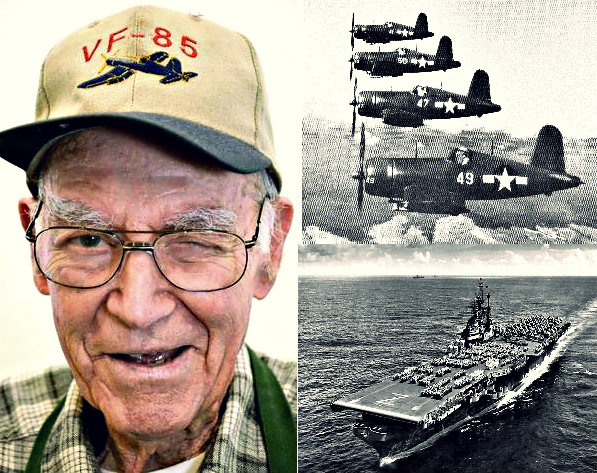
WWII veteran John Moore, one of the youngest Navy pilots the country had during the Second World War, recently turned 90 Thursday (March 27) and he celebrated his birthday by directing puns to himself.
Ever the joker, John Moore commented about how he he was an expert at flying a Corsair and land it on an aircraft carrier deck just as easily in his heydays sixty-nine years ago but recently got into trouble by hitting a car while pulling into a parking space.
He also laughingly quipped about how to celebrate his 90th year when he doesn’t drink, smoke, gamble or frolic around with women and he was quite sure the fire department would come running over a cake with 90 candles on it.
John Moore was among the nation’s youngest pilots to fight during WII. Joining the Navy at 18, he underwent flight training when he was 19 and by 21 was flying F4U Corsair and was part of the squadron assigned to the aircraft carrier USS Shangri-la.
Moore was among the pilots who did air-to-air combats and attacked enemy installations. His early years as a Navy pilot were lucky. In June 1945, he met his first head-on with the Japanese that almost cost him his life.
He was attacking a Japanese airfield in the island of Honshu when his plane got struck that he had to abandon it in the Sea of Japan.
He was able to alert air rescue knowing full well that his plane was going down. Fortunately, they were rescuing a pilot nearby and was on their way. However, when the rescuing craft had mechanical difficulties, it couldn’t stop near the water and the only other option was to throw a rope hoping that John Moore would be able to grab it and hold on for life.
He was able to grab the lifeline at first pass but had to let go when he was almost drown as he was dragged through the water. The craft had to come back and throw the rope once more. He got it, tied it that time to his wrist and allowed the craft’s crew to drag him in.
According to the war veteran, thinking about the accident still give him the chills.
WWII vet John Moore, with his laughing demeanor yet steadfast spirit, epitomizes a generation of Americans that’s decaying fast — the generation that weathered through the Great Depression and was able to went on to a war which changed the world. This generation has been branded the Greatest Generation and according to the friends of John Moore, the name really fits.
His friends and loved ones surprised the WWII veteran with a party complete with a cake.
Betty Moore-Hafter, daughter of the war veteran, expressed how she couldn’t imagine the courage her father and his generation showed by going through WWII serving it which in turn left them with a “sense of being part of something”.